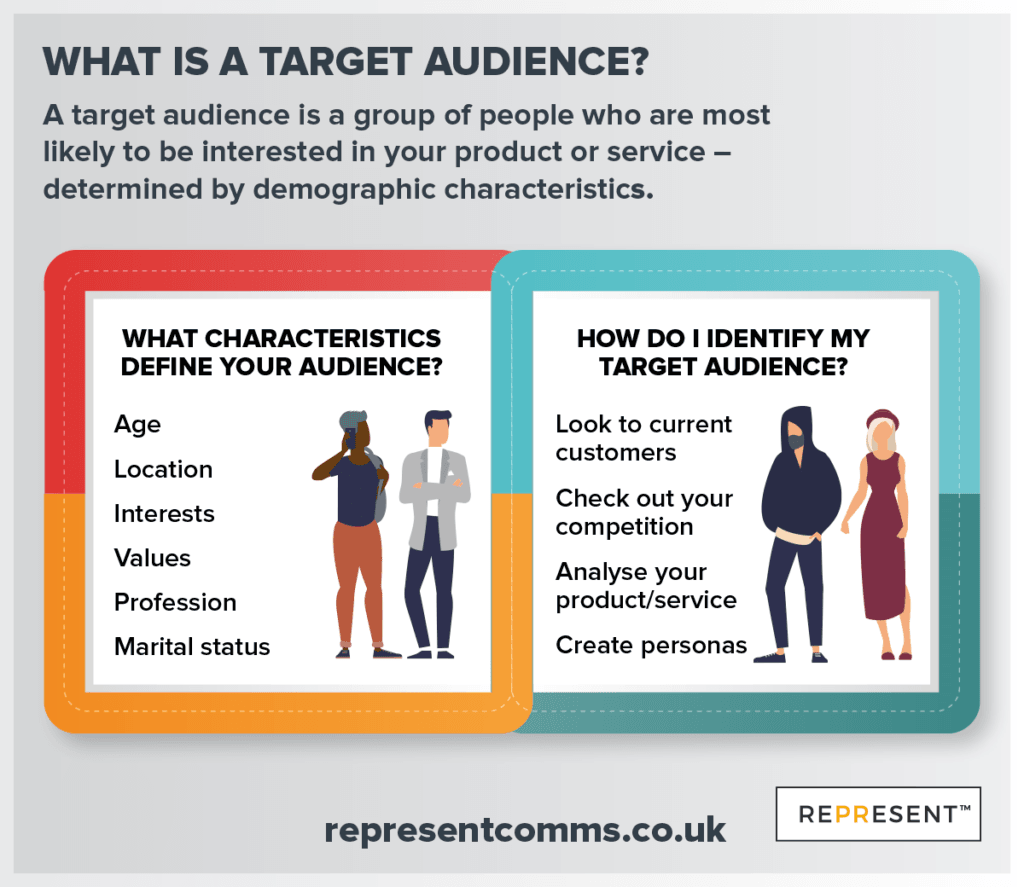When planning any communications strategy for your business, brand or product it’s important you define your target audience. But why, and what is a target audience?
A target audience is a group of people who are most likely to be interested in your product or service. These groups can be defined by many demographic characteristics, including location, age, interests, values and profession.
Defining your target audience will enable you to ensure your communications are targeted and that your product or service is tailored to your ideal customer base.

So, with that in mind, how do you set about identifying your target audience?
Look at your current customers
The first place to start is your current customer base. Consider your most recent customers and compile the information you know about them in as much detail as possible. Consider their professional background, their job role, their age, why they did business with you, how they discovered your organisation, their personal hobbies etc. These will all help to form a picture of the type of people interested in your product or service.
You can compile this information through anecdotal evidence, but you can also get technical and analyse your audience online. Services like Google Analytics and Facebook Business Manager can offer detailed breakdowns of your user demographics – right down to their personal interests. This is of course anonymised information but makes for a fascinating – and useful – insight into who your audience is.
If you’re a new business and don’t yet have a customer base, analyse your product or service to determine this information. Ask yourself ‘what problems does this solve?’ and ‘who has these problems?’.
Check out your competition
You can also look to competitors and their audiences.
Research who is interacting with them on social media, who is writing about them, which outlets are covering them, who is reviewing them online – try to gauge from this which demographic would be interested in what you have to offer.
Create personas
Once you have identified your target audiences, you will soon see that there are a plethora of different interests and reasons for engaging with your brand. You’re never going to be able to target everyone individually (well, not yet, anyway), but you can bring in general attributes that will be common to select groups of people.
To simplify the process, create a ‘persona’ for each group. Give each group a name, and attribute characteristics to them. For example, a tour operator might identify:
- Jane, 32, full time professional and mother of three, wants to create long lasting memories with her family but is short on time
- David, 49, investment banker, travels a lot for work, only in town for a few days
- Sarah, 21, visiting her friend at university, wants to take great photos for her Instagram feed
By having a clear vision of the kind of person you are targeting, you can then begin to work out how to communicate with them.
Time to communicate
Once you have developed your target audience personas, you can then begin work on how you are going to communicate with them. Set out a plan for your distinctive personas and decide how you will get your message across in a way that matters to them – including what channels to utilise and communication tone and style. Then apply this across all your communications!
Of course, doing this work independently can be a challenge, and that’s why communications agencies like ours are here to help. We will research your target audience extensively, and then develop a tailored comms plan to connect with them in meaningful ways, getting you the results that you need for your business.
Interested in finding out more about our comms services? Get in touch now, or book in an appointment for us to call you back at a time that’s convenient to you.


